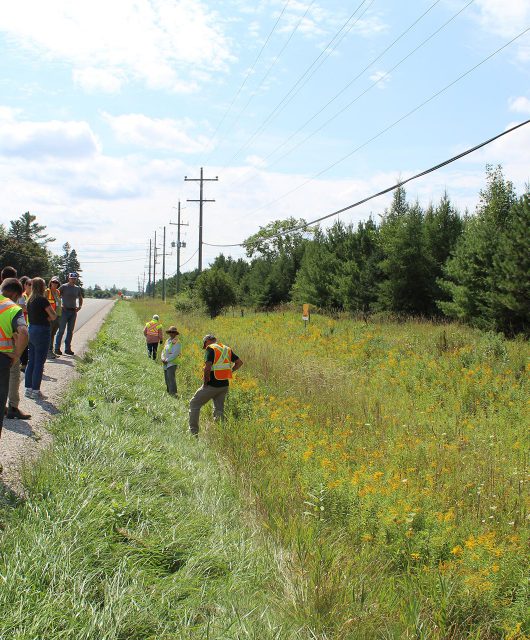Consider the number 417. On the surface, it may seem unremarkable. It’s even mathematically rather dull — 3 times 139. Meh. But looked at through the lens of carbon concentrations in the atmosphere, it is momentous.
When the concentration of carbon dioxide in the atmosphere reaches 417 parts per million, that will mean it is half again as much as it was before the industrial revolution began in the 18th century. In other words, before we started running our economy on coal, oil and gas, the concentration was 278 ppm, or 2 times 139.
“The rapid accumulation of atmospheric CO2 will hit an ominous threshold this spring. There are signs finally that the world may be taking it seriously.”
~Alanna Mitchell
Getting to 417 will breach what the U.K.’s Meteorological Office calls this “iconic threshold.” And it will happen in the next few weeks, the Met Office says, likely sometime in April. That will be the first time the level has been that high in at least three million years, and likely more than 20 million.
We are in dangerous climate territory. Last year, the foul 2020, clocked in as the warmest since humans began making records, tied with 2016. Add to the heat a spate of ferocious wildfires, hurricanes, extreme rainfall and droughts, and you have the picture of a climate system falling to pieces, endangering the norms that make the planet habitable for our species. In the U.S. alone, climate-related damages cost the insurance industry US$95 billion last year.
Even more noteworthy is the pace of this rise. It’s incredibly hard to change the chemical composition of the atmosphere this much in such a short time — just a few hundred years. This modern belch of carbon is the fastest increase in atmospheric concentrations in at least 300 million years, according to a landmark study by Bärbel Hönisch of the Lamont-Doherty Earth Observatory at Columbia University in New York. It even outpaces the accumulation that led to the Permian extinction 252 million years ago, when violent volcanoes spewed so much carbon into the atmosphere that 90 per cent of species on the planet went extinct. The Great Dying, as it’s known, was our planet’s worst mass extinction.
What’s worse is how fast this carbon load is increasing now. It took about 200 years for the carbon level to reach an earlier symbolic turning point — 348 ppm. That’s 25 per cent higher than before we started burning fossil fuels, and it caused a sensation among climate scientists when it happened in 1986. The subsequent 25 per cent — which will bring us to the dreaded 417 in April — took just 35 years. And that pace is still speeding up, despite the pause in emissions last year caused by so many people staying home during the pandemic.
But at the same time that we’re reaching these bleak new mileposts, there are signs humanity may at last be ready to pull back from the very worst effects of climate destabilization. In November, Canada pledged to reach net zero carbon emissions by 2050, joining a club of more than 100 other countries. (Net zero, or carbon neutrality, means any new carbon that goes into the atmosphere is offset by carbon being absorbed from the atmosphere, say, through tree-planting.) Among them are some carbon heavyweights: the European Union, Japan, South Korea. China vows it will get there by 2060.
This marks the first time so many nations have made vows of carbon neutrality. They’re practically in a race to put out the press releases. And several, including Germany, France, Sweden, New Zealand and the U.K. have passed laws binding their countries to net zero.
“There are hopeful signs that humanity may at last be ready to pull back from the very worst effects of climate destabilization.”
~Alanna Mitchell
A key first step is stripping carbon emissions from electrical systems. In Canada, we’re already at 82 per cent, mainly because Ontario shut down its coal-fired electrical plants and because we have so much hydro power capability. Other countries are catching up, spurred by the fact that solar panels and other renewable forms of energy produce electricity more cheaply than fossil fuels. Even Texas, the land of oil and gas, is falling in love with cheap renewables.
This novel combination of political wisdom and the falling costs of decarbonization have led Tim Lenton, director of the influential Global Systems Institute at the University of Exeter in the U.K., to identify a new possibility. Instead of tipping points pushing us ever closer to the brink, what if they could catapult us back the other way? Relatively small actions — many more electric vehicles, say, or a much faster move away from coal — could add up fast enough to really cut emissions.
The catch is that we have to speed up the progress, which Lenton calls plausible. If we could, the trend could prove a more powerful global symbol than breaching 417.

Reprinted from Canadian Wildlife magazine. Get more information or subscribe now! Now on newsstands! Or, get your digital edition today!





